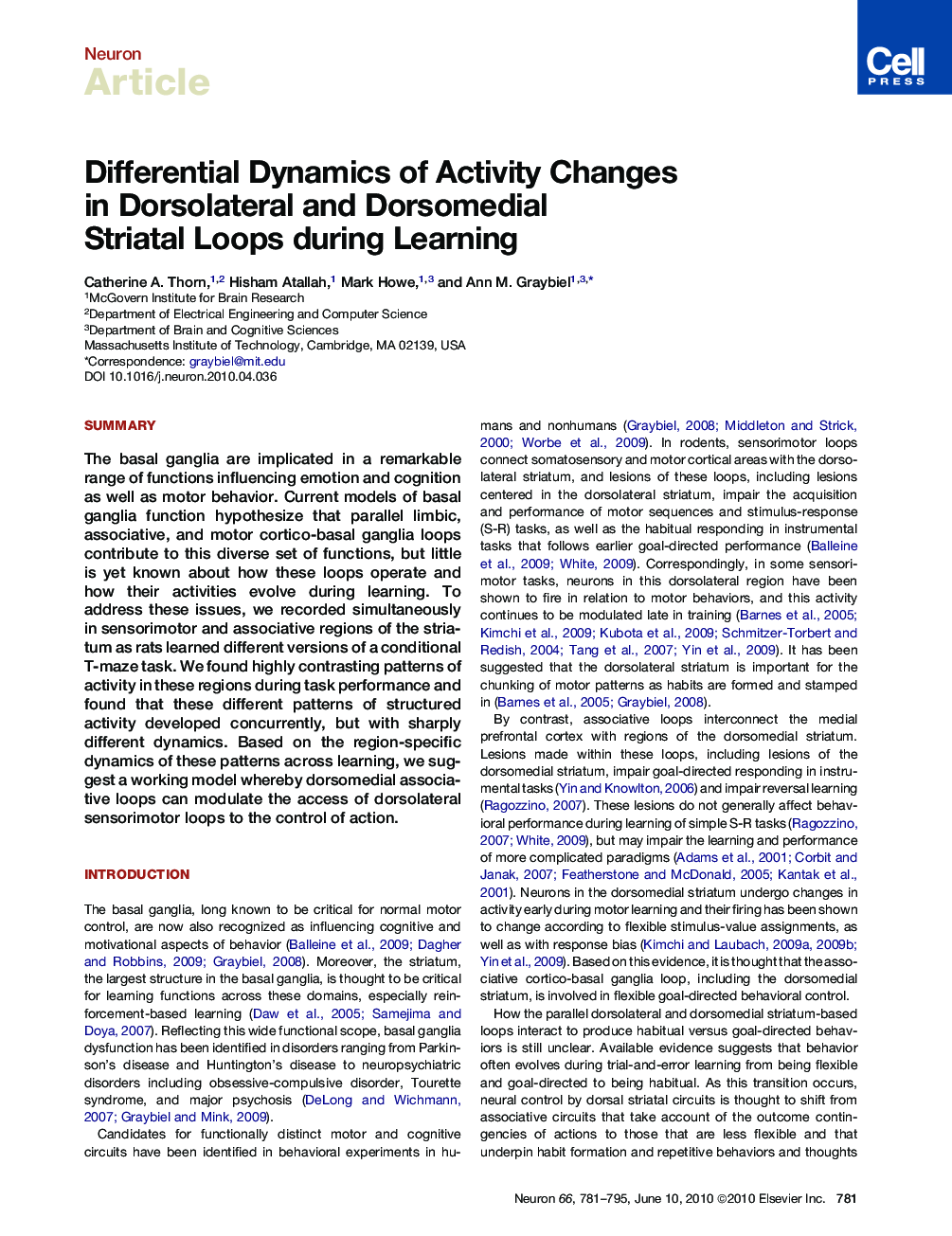| Article ID | Journal | Published Year | Pages | File Type |
|---|---|---|---|---|
| 4321945 | Neuron | 2010 | 15 Pages |
SummaryThe basal ganglia are implicated in a remarkable range of functions influencing emotion and cognition as well as motor behavior. Current models of basal ganglia function hypothesize that parallel limbic, associative, and motor cortico-basal ganglia loops contribute to this diverse set of functions, but little is yet known about how these loops operate and how their activities evolve during learning. To address these issues, we recorded simultaneously in sensorimotor and associative regions of the striatum as rats learned different versions of a conditional T-maze task. We found highly contrasting patterns of activity in these regions during task performance and found that these different patterns of structured activity developed concurrently, but with sharply different dynamics. Based on the region-specific dynamics of these patterns across learning, we suggest a working model whereby dorsomedial associative loops can modulate the access of dorsolateral sensorimotor loops to the control of action.
► Sensorimotor and associative striatum differ in learning-related neural dynamics ► The task-related patterns of activity in these regions are different ► These different regions are active simultaneously as the patterns emerge ► The associative striatum may play a permissive role in the expression of habits
